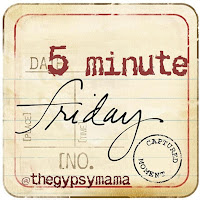Sorry I haven't written much lately. With it being the end of the term at the school where I teach online and about a million other things going on, I just haven't really had much of a chance - or desire, to be honest. :) Hopefully that will change soon.
In the meantime, here's "the rest of the story" from my Mom. (If you're just joining this series on How to Make the Most of Moving to a New Town, you can read the earlier posts here.) I hope you'll also take a few minutes to visit my Mom's blog here.
Once I dealt with the basics of surviving in Ecuador and could finally prepare a decent meal using foreign ingredients, non-North American-made appliances, and factoring in an altitude of 8500-9000 ft. (we were in the Andes Mountains, not on the coast or in the rainforest), THEN I felt as though I could finally “bloom where I’d been planted.” Because, after all, when I could extend hospitality – a fancy word for “having folks over to the house” – then friendships could be developed and warmth and love could be extended, Connie-style.
Many people came through our front door, representing a wide gamut of economic levels and social backgrounds. We hosted numerous missionaries and volunteer teams from the States, but some of our most memorable times came when Ecuadorian and Quichua people were in our home. (Quichua are the indigenous people of Ecuador, the poorest on the economic ladder).
Three young Quichua men came every Thursday night for supper and for training in church planting. At first, I was pretty nervous about what I would serve them, but that only lasted through the first meal. Those guys ate everything I put in front of them, without questions, and without any indication that they “didn’t like it.” I tried a few Southern dishes, but mostly I stuck to soups (very common in the Andes since it gets cold when the sun goes down), chicken, rice, salad, and bread. There were never any leftovers because whatever they didn’t finish at the table they happily took home for later. These young men earnestly prayed for daily work in order to provide “daily bread” for themselves and their families. For them, food was survival. It was not a matter of taste preferences. What was given to them to eat was accepted and eaten. Period. I must admit that it’s now a little harder for me to be tolerant of picky eaters.
Ecuador is one of the world’s biggest exporters of bananas, yet I was never able to find a single box of Nilla Wafers for sale there. I couldn’t imagine these folks not experiencing the delight of banana pudding. Once when a volunteer team was coming in, I asked them to bring me some Nilla Wafers and could hardly wait for the next time we had Ecuadorian guests. I watched eagerly for the reaction to my yummy dessert. What a disappointment! They took a couple of polite bites and then all of a sudden were “too full for anything else.” (These were Ecuadorians, you understand, not Quichua). Then, it dawned on me. They weren’t used to so much sugar. To their tastes it was probably so sweet it made their teeth hurt. Oh well. From then on, I saved my Nilla Wafers and banana pudding for visiting Gringos (a.k.a. missionaries starved for tastes from home).
We got a further lesson in Latin American culture when another Ecuadorian family came for dinner. As we finished the main course, I started clearing the table for dessert, and Steve jumped up to help me. The Ecuadorian husband – who was a product of a highly-macho upbringing -- was very disturbed by Steve’s actions. Some rapid words of Spanish were exchanged, and his wife and daughters quickly began to help me. In his mind, that was NOT a job for a man, and I’m reasonably sure he didn’t plan to start such a practice at his own supper table. Evidently, we were forgiven, because we enjoyed many more meals with this family, but Steve kept his seat when this man was present. “When in Rome . . . .”
The longer we stayed in that beautiful country, the easier it was to “bloom.” After all, the country itself has spectacular natural beauty, and the lush vegetation provided a continuous palette of brilliant color. Poinsettias grew as big as trees. Calla lilies, so expensive here, were very common, and the roses, oh, the roses. I was able to buy a dozen beautiful long- stemmed ones in any color at any time for less than $1.50.
I could write for days about the blessings we received as a result of our time in Ecuador. If you ever get a similar opportunity, I hope you’ll grab it, and I hope you’ll find your own ways to bloom while you’re there.
Next week, I'll be back for Bloomin' Monday. Just a couple more posts in this little series. I hope you've found it to be helpful. How are you bloomin' these days?
This post is linked up to one or more of the following blog parties. Check them out! Monday: Menu Plan Monday on I'm an Organizing Junkie Wednesday: Works for Me Wednesday at We are THAT Family Friday: 5 Minute Friday at The Gypsy Mama, Company Girl Coffee at Home Sanctuary Other days: A Wise Woman Builds Her Home











